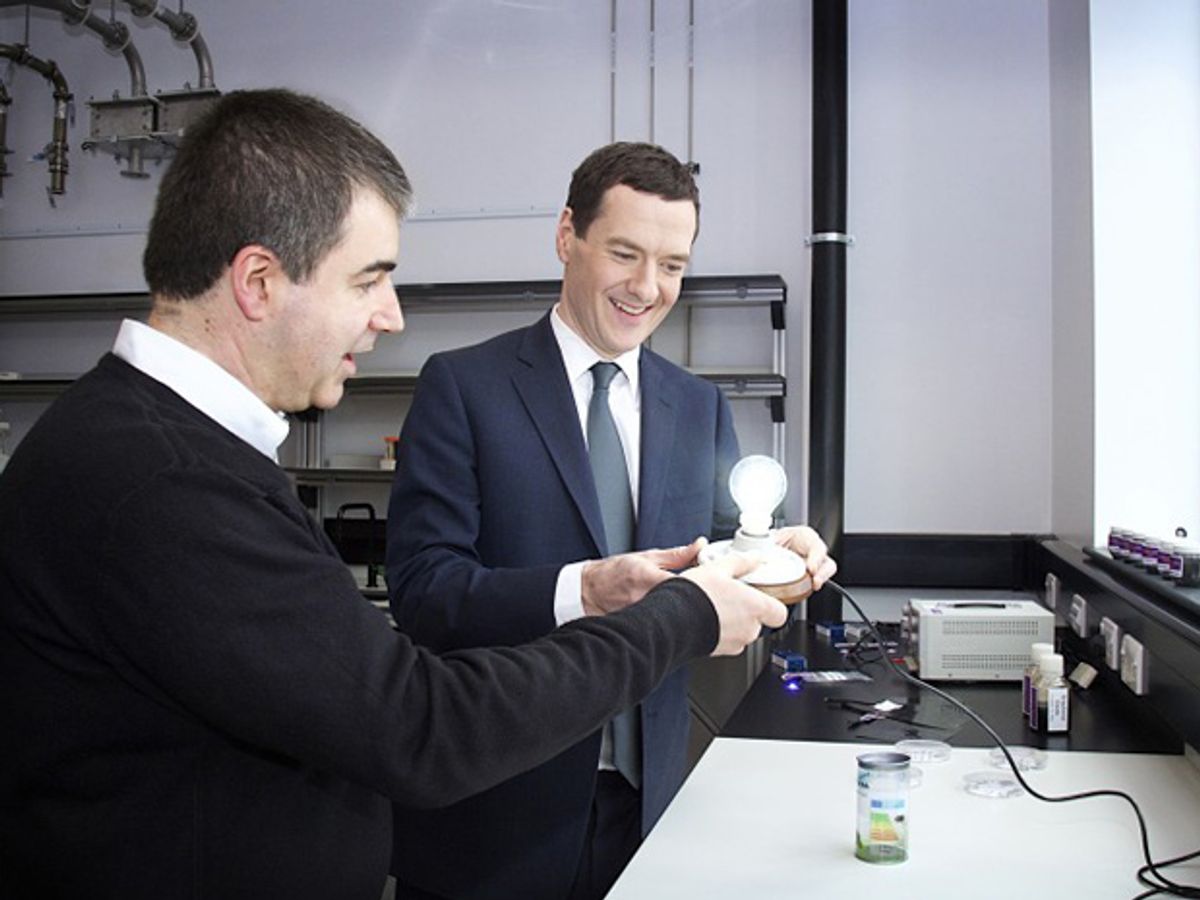The big story this week in graphene, after taking into account the discovery of “grapene,” has to be the furor that has surrounded news that a graphene-coated light bulb was to be the “first commercially viable consumer product” using graphene.
Since the product is not expected to be on store shelves until next year, “commercially viable” is both a good hedge and somewhat short on meaning. The list of companies with a commercially viable graphene-based product is substantial, graphene-based conductive inks and graphene-based lithium-ion anodes come immediately to mind. Even that list neglects products that are already commercially available, never mind “viable”, like Head’s graphene-based tennis racquets.
So, okay, the BBC got caught up in some PR language promoting what appears to be a UK-developed technology that’s been financed by a Canadian company. That’s nothing outside standard operating procedure. But there were still some issues in the piece that had me scratching my head.
What wasn’t immediately clear to me based on the story I read in the BBC was whether the company, called Graphene Lighting, was coating an incandescent light bulb or an LED. Part of my doubt was based on not seeing what benefits could be derived from coating a solid-state device, like an LED, with a conductive material. What kind of difference could it make?
Daniel Cochlin, the graphene communications and marketing manager at the University of Manchester (the Vice Chancellor of which is somewhat disconcertingly one of the directors of Graphene Lighting) confirmed that the light bulb was indeed an LED.
When I asked Cochlin what benefits does coating a solid-state device with a conductive material give, he replied in an e-mail, “The coating takes heat away from the LED components, which would allow less energy use and longer lifetime.”
In the BBC piece this cut in energy use is cited as being 10 percent. I guess a 10-percent reduction in energy use is an attractive feature for an LED light bulb. But could such a small energy reduction really pay off when you consider that you would need to add another production process to create a graphene-coated LED?
That had me somewhat confused, especially since the BBC piece makes the point that the graphene-coated LED “is expected to be priced lower than some LED bulbs, which can cost about £15 each.” That quoted price appears to be an average across the industry, so the product could presumably be an LED that before becoming graphene-coated was on the lower side of this average.
However, this was not the explanation I received from Cochlin. He explained that the manufacturing process that the company was employing was cheaper because of efficiencies in the production of the graphene-coated LED. He wouldn’t identify where those efficiencies derived from because of proprietary concerns. Further, he could not offer any metrics on how much more efficient the process was.
As a backdrop to this announcement, the UK government has made a big investment of £38 million (US$53.3 million) in the National Graphene Institute located at the University of Manchester with an additional £23m (US$34 million) coming from the European Regional Development Fund. The grand opening for the Institute occurred a week before this latest announcement.
We can expect that the Institute will be announcing great things in the future, when one looks at what’s in their hopper, such as Andre Geim’s development of a graphene-based membrane that could be used to extract hydrogen out of humid air. In the meantime, we’ll see how “commercially viable” graphene-coated LEDs really are.
Dexter Johnson is a contributing editor at IEEE Spectrum, with a focus on nanotechnology.



